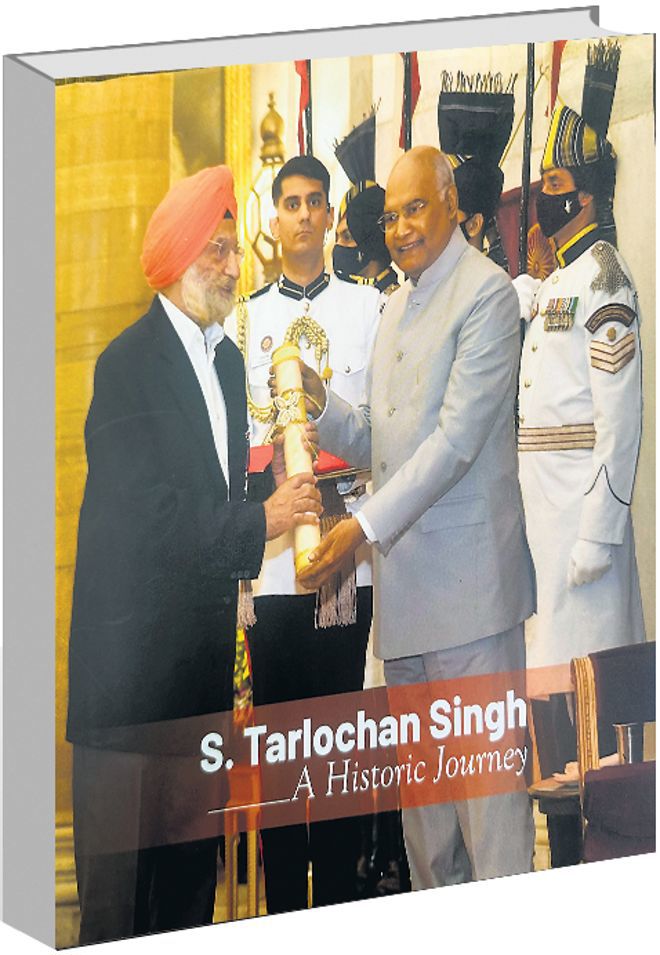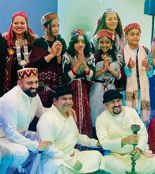S. Tarlochan Singh — A Historic Journey by Prabhleen Singh. Publication Bureau, Sunny Oberoi Vivek Sadan. Pages 146
Book Title: S. Tarlochan Singh — A Historic Journey
Author: Prabhleen Singh
Sandeep Sinha
Tarlochan Singh was awarded the Padma Bhushan by the President of India in 2021. It was in recognition of his contribution to public life, through service not just to his community but to the nation as such. Public relations has been his forte, as he himself admits in an interview that forms part of the book, ‘S Tarlochan Singh — A Historic Journey’. It is the art of managing contradictions, he says. His advice is to not praise too high or speak ill about one’s superiors because of the sensitivity of the post they hold.
His days as a government servant spanned the time of the mighty Pratap Singh Kairon and Gian Singh Rarewala to Giani Zail Singh, who took him along to Rashtrapati Bhavan when he became President. It is Tarlochan Singh to whom goes the credit why Giani Zail Singh escaped the flak of the Sikh clergy in the aftermath of Operation Bluestar for he convinced them that he was in the dark about the sequence of events. Kairon and Rarewala recognised his talent for public relations and made him the public relations incharge at Bhakra Nangal dam, shifting him from Ferozepur, where he was posted as DPRO. Displaced as a refugee from Dudhial village in Jhelum district of Pakistan in the wake of Partition, his has been a success story that is also a tribute to the values that India as a nascent democracy sought to imbibe.
The book has a chapter, ‘Rashtrapati Bhavan — Unwritten Stories’, which dwells on the relationship between Giani Zail Singh as the President of India and Rajiv Gandhi as the Prime Minister. Tarlochan Singh proved to be an apt moderator because Rajiv Gandhi had appreciated his role as the Director, Asian Games, in 1982 which came in handy while acting as an interlocutor between the two. Their relationship was rooted in the trying circumstances of the times and while they strove to avoid creating a trust deficit, difficulties did arise from time to time.
Giani Zail Singh administered the oath to Rajiv Gandhi as PM after the assassination of Indira Gandhi and on his demitting office, Rajiv Gandhi invited him for dinner and allotted a bungalow post-retirement, a practice that still continues. The chapter has nuggets of information not quite known like the National Commission for Minorities organising a meeting of then Gujarat CM Narendra Modi with leaders of the Muslim community after riots in that state. It was on its intervention that KPS Gill was appointed the security adviser; Modi did not allow the procession of mortal remains of Hindus, who died in the train, to their villages, the book says.
Painstakingly put together with letters, photographs, speeches and tributes from eminent figures, the book has information galore for those interested in the affairs of the nation in general and Punjab in particular. Above all, it is a book about a personality who belongs to a generation whose restraining and sober influence was the hallmark of polity. As former Army Chief General JJ Singh writes, “He continues to serve the country and the Sikh community tirelessly and does not see any dichotomy between his loyalties to both.”
Tarlochan Singh is also heading a memorial committee for the martyrs of the Komagata Maru massacre of 1914. A memorial is being built at Budge Budge on the banks of the Hooghly in Kolkata at the spot where they were massacred. Union Minister Hardeep Puri laid the foundation stone of the memorial, which shall commemorate this incident. He is also a member of the Jallianwala Bagh Trust headed by the Prime Minister.
After the Bhakra dam was inaugurated in 1962, Tarlochan Singh was posted in Markfed from where he went to East Germany to learn about mechanised farming. He has to his credit the introduction of combine harvesters in India.














